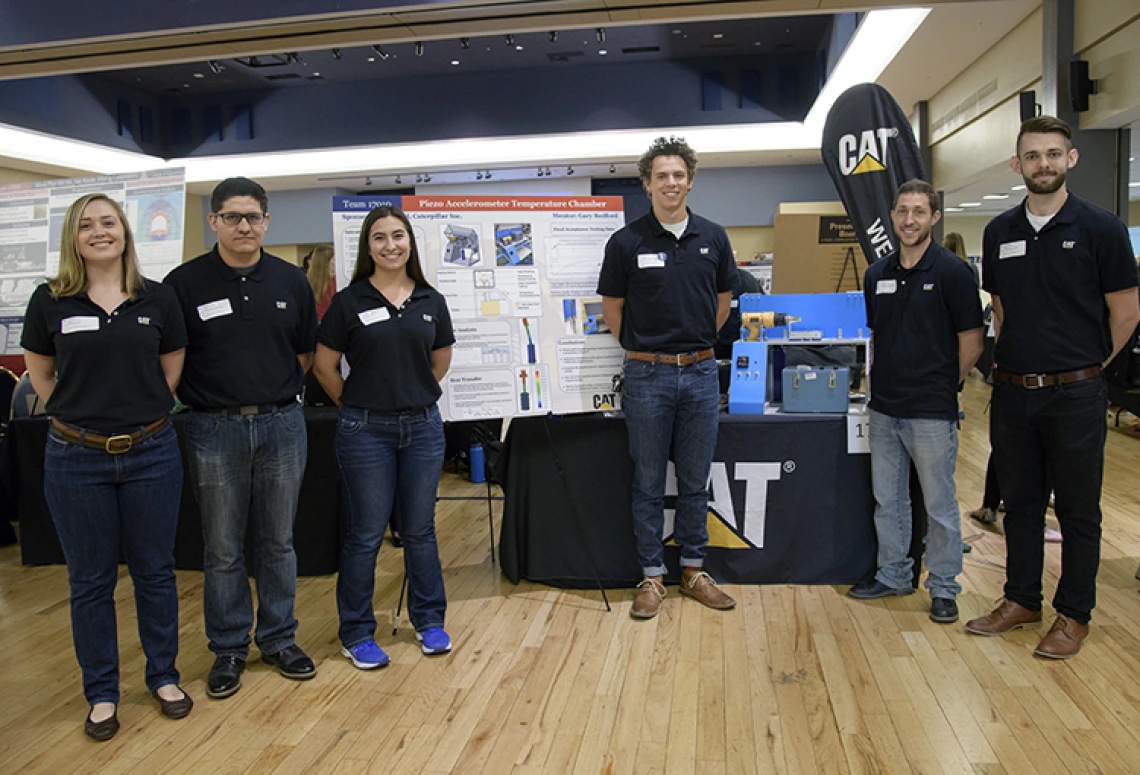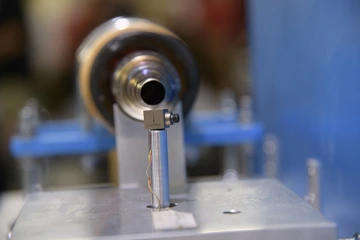Caterpillar-Sponsored Team Turns Up the Heat on Acceleration Calibration

Caterpillar-Sponsored Team Turns Up the Heat on Acceleration Calibration

Project Title: Piezoaccelerometer Temperature Chamber
Team 17010 Members:
Nicholas Anderson-Masters, electrical and computer engineering
Jacob Lanier, mechanical engineering
Amber Morgan, systems engineering
Carlos Munoz, mechanical engineering
Daniel M. Quinn, biosystems engineering
Jamie Roberson, mechanical engineering
Sponsor: Caterpillar
Team’s Chamber Helps Caterpillar Calibrate More Accurately
When something goes wrong with a piezoaccelerometer, a device that measures acceleration in high temperatures, Caterpillar engineers use a machine called a shaker to calibrate it. The shaker vibrates the accelerometer at a known frequency, creating a data set to help identify the problem.
However, the shaker only works at room temperature. As a result, the data gleaned from the calibration can be unreliable, because the piezoaccelerometer isn’t being tested in the high-heat environment it’s meant to work in.
For their senior design project, Team 17010 created a testing chamber that allows for the best of both worlds: increasing the temperature around the piezoaccelerometer without overheating the shaker’s delicate electronics.
“We’ve never been able to apply heat and shake the piezoaccelerometer at the same time,” sponsor mentor Nitin Patel said. “Now, the piezoaccelerometer is at temperature, but the shaker is at room temperature, and everyone’s happy.”
Learning to Work Outside the Box
“Everyone” includes Patel, who graduated from the University of Arizona with a bachelor’s degree in mechanical engineering in 2002. He said the collaborative format of the Engineering Design Program has come a long way since he was a senior.
“I like the interdisciplinary nature of the team project,” he said. “I wanted five or six of the best engineers I could get — I didn’t care what their backgrounds were. Being an engineer means you’re working outside the box all the time.”
Divide to Conquer

A close-up of Team 17010's piezoaccelerometer temperature chamber
Patel enjoyed giving students a chance to build real-world engineering skills, such as teamwork, problem-solving and persistence.
At the start of the project, for example, the team brainstormed ideas for how to heat up the piezoaccelerometer, including a heat gun and an electric heater. They bought supplies to try the electric heater approach but ran into difficulties.
Patel suggested a technique he and his colleagues often take when they face a similar stalemate: Divide the team into two, so some engineers can keep working on the task at hand, and some can investigate other solutions. Half of Team 17010 returned to the heat gun idea and found it to be more effective, and the team used it in their final project.
“That’s the process that you go through as an engineer,” Patel said. “Not everything works the first time around.”
Because it’s a troubleshooting device, the temperature chamber isn’t something Caterpillar uses every day. But Patel said it’s what the company will turn to when they have a concern about how a piezoaccelerometer is working.
Caterpillar will also return to sponsor four news senior projects with the Engineering Design Program in the 2018-2019 academic year, and Patel plans to act as an Engineering Design Day judge as well as a sponsor.

